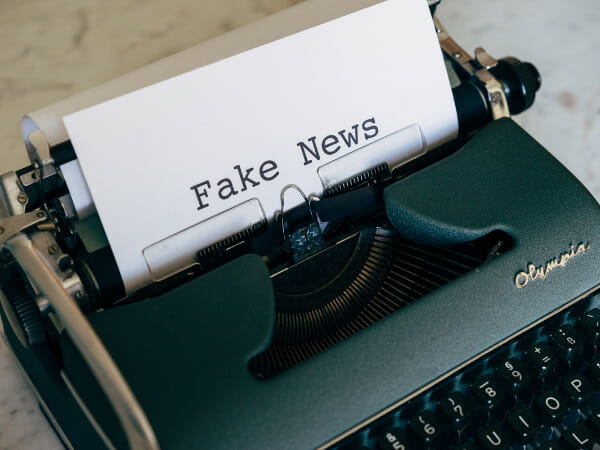How to spot fake news – what are the signs I should look for?
The internet is a huge part of our lives nowadays, so we should know how to spot fake news. It allows anyone to share information from all over the world. Unfortunately, some people spread deliberately misleading news articles, fooling others into sharing false information. Though you see false news on a screen, it can have a huge impact on the real world.
We could look to the COVID-19 pandemic as a major example. Countries have been trying hard to keep the virus at bay by vaccinating their people. Sadly, people refuse to take their shots because they believed in fake news stories and conspiracy theories. Because of these bits of false info, entire countries are taking longer to get rid of the virus.
Before we fight fake news, we have to clearly define what it is. We will also go deeper into the negative effects of fake news by providing some examples. Then, we will explain how you can identify them and find better sources. That way, you can teach these tips to others, so we could further prevent these from spreading on the internet.
What is fake news?

You’ve seen the term go through TV news feeds, and you may have heard Donald Trump repeat it during his election campaign rallies. Yet, do you truly know what “fake news is?”
Fake news takes on various forms of sharing information to promote a certain political or moral point of view. You can also separate it into three categories:
- Mis-information – False info shared by people who don’t intend to harm others.
- Dis-information – False info shared by people who aim to harm others.
- Mal-information – Real info shared by others who intend to harm others.
Now that you know the types of fake news, let’s look at how it appears on the internet. Chances are, you’ve seen all of the following forms:
- Clickbait – Scroll down on websites and you’ll often see a bunch of sponsored articles below. On real news sites, these come from reputable companies that are promoting their products and services. Meanwhile, others contain fake news or even a virus!
- Propaganda – Some people spread false stories about political figures or issues. You’ll see these more often during election season.
- Sloppy writing – Other writers simply fail to include all the facts which mislead readers. For example, Urban Outfitters released an Election Day Guide that told voters they needed a registration card. However, no US state requires it.
- Biased news – People may prey on people’s beliefs by spreading fake news that supports those. Note that having a bias is natural because it’s part of human nature and you can’t form opinions without it. Yet, news sources must let their audiences know what their biases are.
- Parody/Satire – Some sites write fake articles to entertain people. Unlike fake news, they tell you that it’s meant as a joke. Examples include The Onion and The Babylon Bee.
Read More: Booster Shots For COVID-19
What’s so bad about fake news?
Right now, millions of people are using the internet in your country alone. They’re sharing how their days went on social media sites, while you are reading great content from Inquirer USA!
With a few clicks, you can send a text message, a photo, or a video. It takes almost no time at all to receive them either. What’s more, it’s so easy to get information nowadays.
Type whatever you want to know on a search engine, and it will pop out hundreds of relevant sources. You may think this isn’t a big deal, but try comparing it to the times before the internet.
Back then, it was a lot harder to learn things. You either had to read a book or speak face-to-face with an expert. The news only came from TV, radio, or newspapers.
Those sources had to follow strict standards when reporting. Jump to our times, and you’ll notice that even regular folks can write convincing news articles.
This makes it hard for people to detect fake news, especially folks who were used to the simpler past. Yet, we should stop its spread or we will see more of the following examples:
- Economic impact – Some articles have been pointing to 5G cellular networks as the cause of COVID-19. As a result, people in Europe and the US started setting fire to these cell towers. This kept people from sending data with 5G which may eventually hurt economic growth.
- Social unrest – Experts point to fake news as the cause behind the attack on the Capitol on January 6, 2021. It encouraged Trump supporters to storm the building due to claims of the election being stolen from Donald. Another fake story reported that the White House had a huge grey wall during the 2020 elections.
How can I spot fake news?
Now you know what false info is and what it can do. Let’s proceed with explaining how to identify them. You can do it by following these steps:
- Confirm the source – If you found a news article on social networks, see where the post found its info. Go outside its Facebook page and see which websites it used. If the info just came from the page itself, it might be a good idea to look away.
- Check the author – Look up the person who wrote the article. Was it someone who knows the subject enough? Are they even real people? It’s too easy to post fake news because people can often hide their identities.
- Follow their sources – Check the sources cited in the article. Read them to see if they support its claims. If the blog doesn’t have any sources or you can’t open them, the writer probably made it all up.
- Read more – Fake news pieces are often meant to spark outrage or other strong emotions. Detach from them and then look into the issue further. Chances are, it’s leaving out too many important details to mislead readers.
- Check the date – The blog might be outdated, so its info is too old to be relevant.
- Check yourself – Everyone has mindsets that affect their decisions. It’s normal, but we should be aware of them. In turn, we could perform better fact-checking on these stories shared online.
Related Articles
Final thoughts
Everyone should learn how to spot fake news nowadays, especially children. Early media literacy can secure a future of well-informed people.
Of course, one of the best ways to avoid fake news is using reputable sources. This ensures you get proper information on the latest trends around the world.
Fortunately, you’re already on one of these good sources. Read other Inquirer USA articles to get your fix of recent and accurate news!



